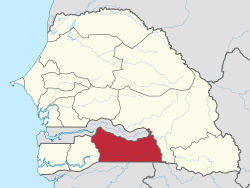
Dakar Region is the smallest and most populated Region of Senegal, encompassing the capital city of the country, Dakar, and all its suburbs along the Cap–Vert Peninsula, Africa's most westerly point.
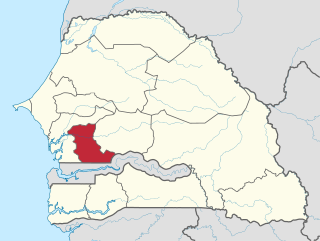
The Kaolack region is a region in Senegal. It borders Gambia and is a common stopping point for travel between Dakar and Banjul. Its borders correspond roughly to the Saalum Kingdom of precolonial days, and the area is still spoken of as the Saalum in Wolof, and its inhabitants are called Saalum-Saalum.
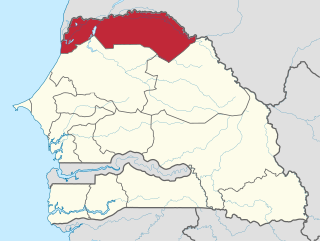
The Saint-Louis Region of Senegal is on the border with Mauritania. Its capital is Saint-Louis.
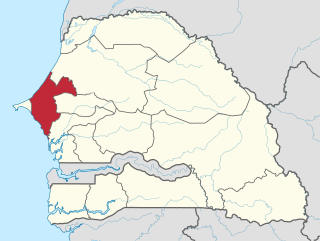
Thiès is a region of western Senegal. The capital is also called Thiès.

Senegal is subdivided into 14 regions, each of which is administered by a Conseil Régional elected by population weight at the arrondissement level. Senegal is further subdivided into 45 departments, 103 arrondissements and by collectivités locales which elect administrative officers. Three of these regions were created on 10 September 2008, when Kaffrine Region was split from Kaolack, Kédougou region was split from Tambacounda, and Sédhiou region was split from Kolda.

Ziguinchor is a region of Senegal. The region is also referred to historically and popularly as Basse Casamance.
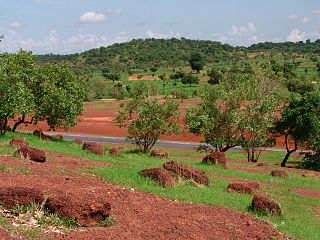
Kayes Region is one of ten first level national subdivisions in Mali called Regions. It is the first administrative area of Mali and covers an area of 120,760 square kilometres or 46,630 square miles. Its capital is the town of Kayes. The province was historically part of the Ghana Empire and the Mali Empire.

The Nzérékoré Region is a region in the southern part of Guinea. Its capital and largest city is Nzérékoré. It is one of the eight regions of Guinea. It is bordered by the countries of Sierra Leone, Liberia, and Ivory Coast, and the Guinean regions of Kankan and Faranah.

Kankan Region is a region of Guinea located in the east of the country. It is the largest region of Guinea by area. The region has five (5) prefectures.

Faranah Region is located in east-central Guinea. It is bordered by the countries of Sierra Leone and Mali and the Guinean regions of Kankan, Mamou, Nzérékoré, and Labé.
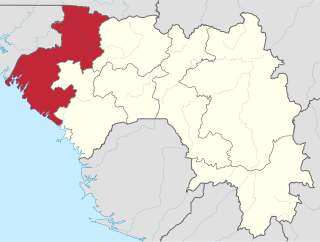
Boké Region is located in western Guinea. It is bordered by the countries of Senegal and Guinea-Bissau and the Guinean regions of Kindia and Labé. Its capital is the city of Boké.

Louga is a city and region of Senegal. The region is located to the northwest part of the country and Louga city is in the northwest of the region - about 50 km inland from the Atlantic coast.

Mamou Region is located in central Guinea. It is bordered by the country of Sierra Leone and the Guinean regions of Faranah, Labé, and Kindia.

Kindia Region is a region located in western Guinea. It is bordered by the country of Sierra Leone and the Guinean regions of Conakry, Labé, Mamou, and Boké.

Labé Region is a region of Guinea located in the north-central part of the country. It is bordered by the countries of Senegal and Mali and the Guinean regions of Faranah, Kindia, Mamou, and Boké.

The 14 regions of Senegal are subdivided into 46 departments and 103 arrondissements and by collectivités locales which elect administrative officers.
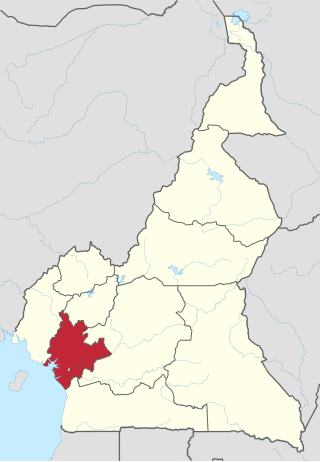
The Littoral Region is a region of Cameroon. Its capital is Douala. As of 2004, its population was 3,174,437. Its name is due to the region being largely littoral, and associated with the sea coast.
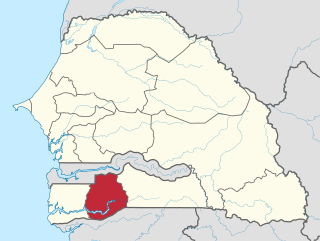
Sédhiou Region is a region of Senegal located in the southwest of the country in the natural region called Casamance.
Linkéring is a rural community of Bonconto Arrondissement in the Vélingara Department, Kolda Region, Senegal.
Sinthiang Koundara is a rural community of Bonconto Arrondissement in the Vélingara Department, Kolda Region, Senegal.
